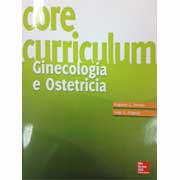358. Placenta Accreta Spectrum Disorders: How to reduce maternal transfusion? A center experience on extraperitoneal retrograde hysterectomy
Published: European Journal of Obstetrics and Gynecology 287 (2023) 148–154
Written by: Francesca Maria Simonetti, Paola Algeri, Ilaria Ferrante, Serena Pirola, Marco Carnelli, Luisa Patanè, Giulia Fierro and Luigi Frigerio
Abstract:
Objective: Placenta Accreta Spectrum disorders (PASd) refer to the range of pathologic adherence of placenta associated with high maternal morbidity and mortality due to severe and sometimes life-threatening hemorrhage at the time of delivery. The aim of this study is to describe the surgical technique of extraperitoneal retrograde hysterectomy, which has allowed a reduction of blood transfusions compared to patients who underwent classical post-partum hysterectomy.
Study design: We collected data from twelve patients with antenatal diagnosis of PASd treated between 2018 and 2021 with an extra-peritoneal hysterectomy using a posterior retrograde approach and we compared them to patients who underwent classical hysterectomy for suspected PASd, treated between 2007 and 2017.
Results: The classical hysterectomy group presented a higher frequency of blood and plasma transfusion compared to the extraperitoneal hysterectomy group. In particular, classical hysterectomy resulted in an independent risk factor for transfusion, with an increment of 6.6 times of risk.
Conclusion: Even if future studies are required, we think that extraperitoneal hysterectomy could be a safe option in case of PASd, considering that classical hysterectomy compared to this approach increases, in our population, the risk of blood and plasma transfusion.
